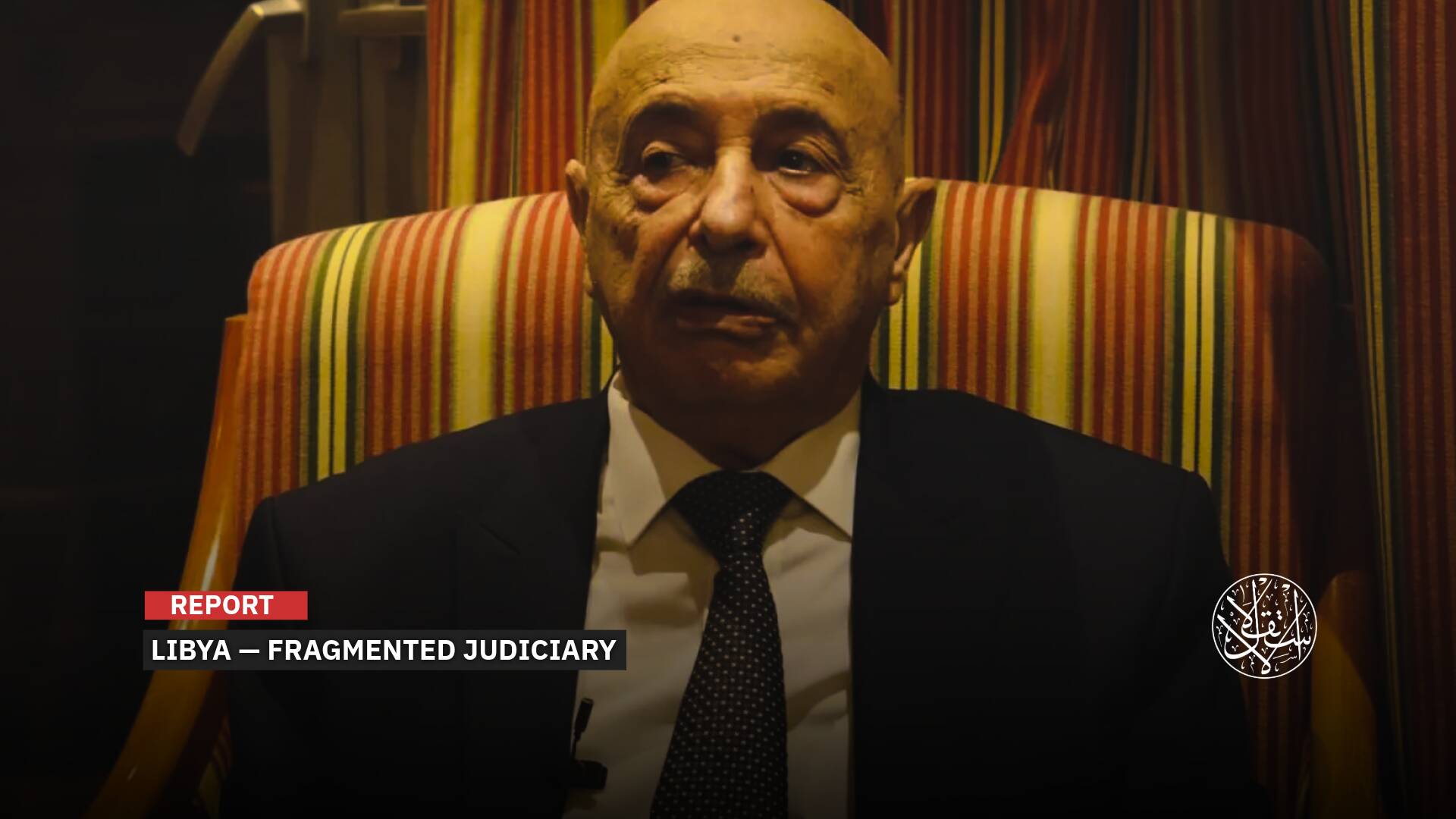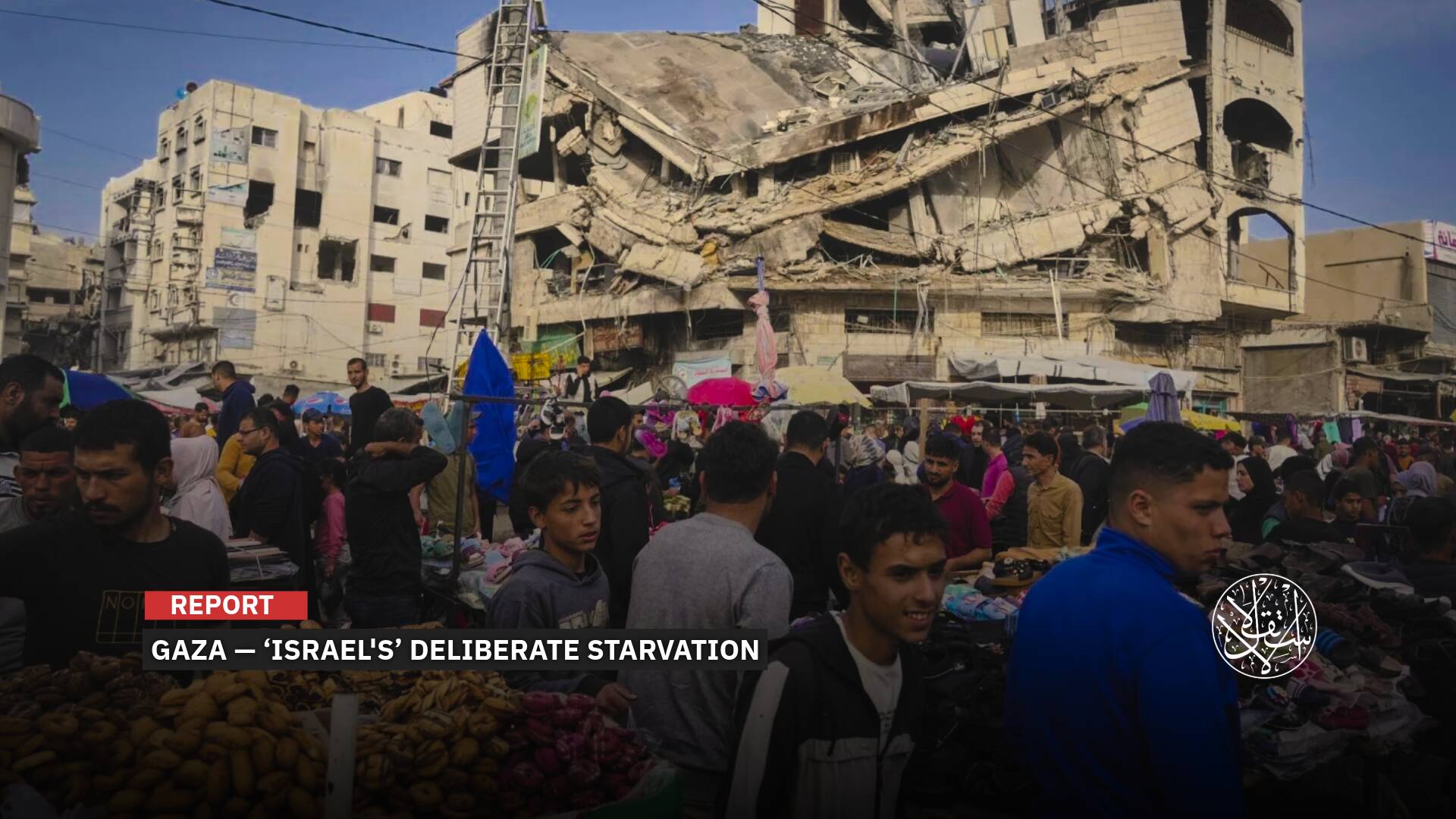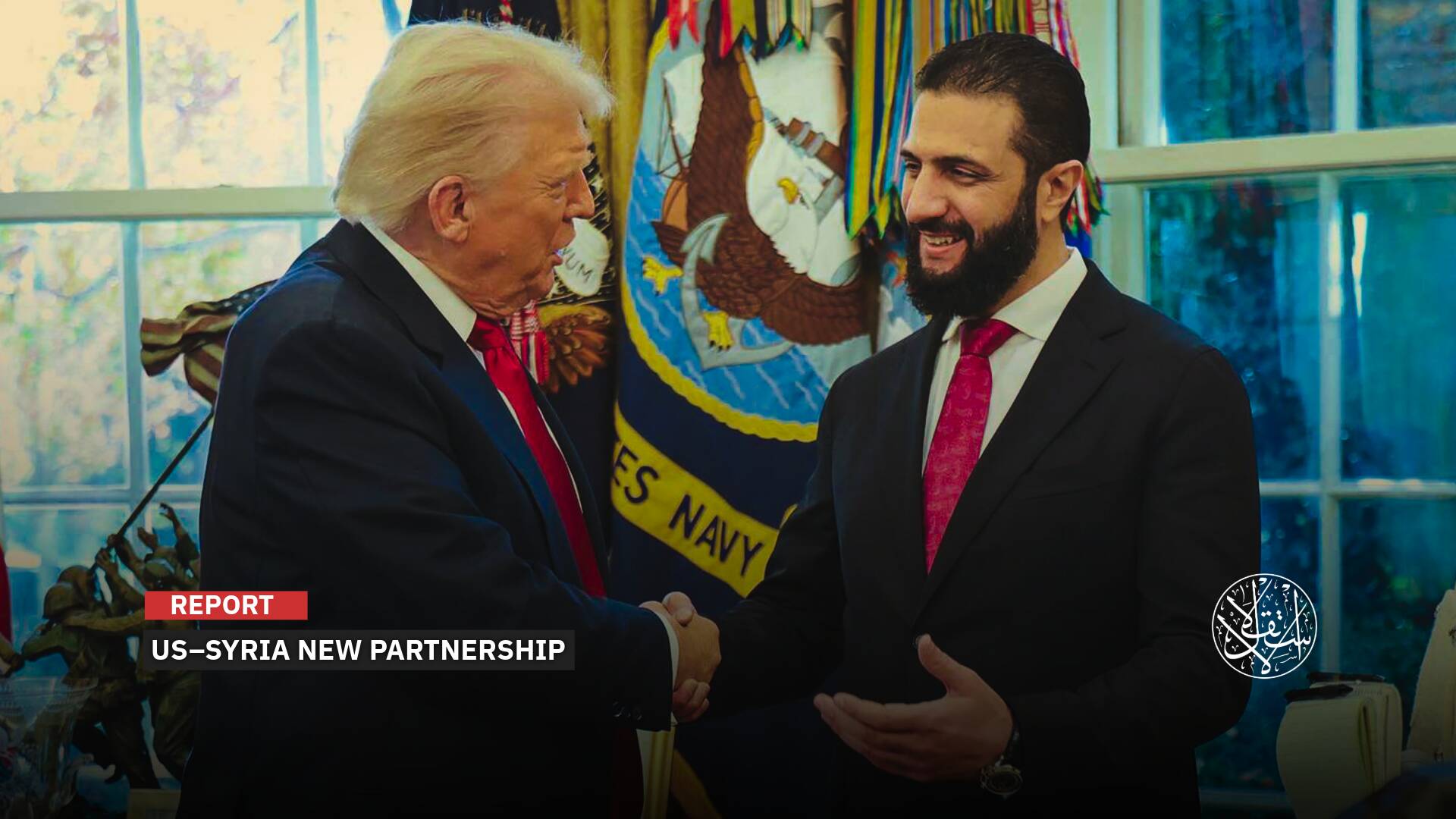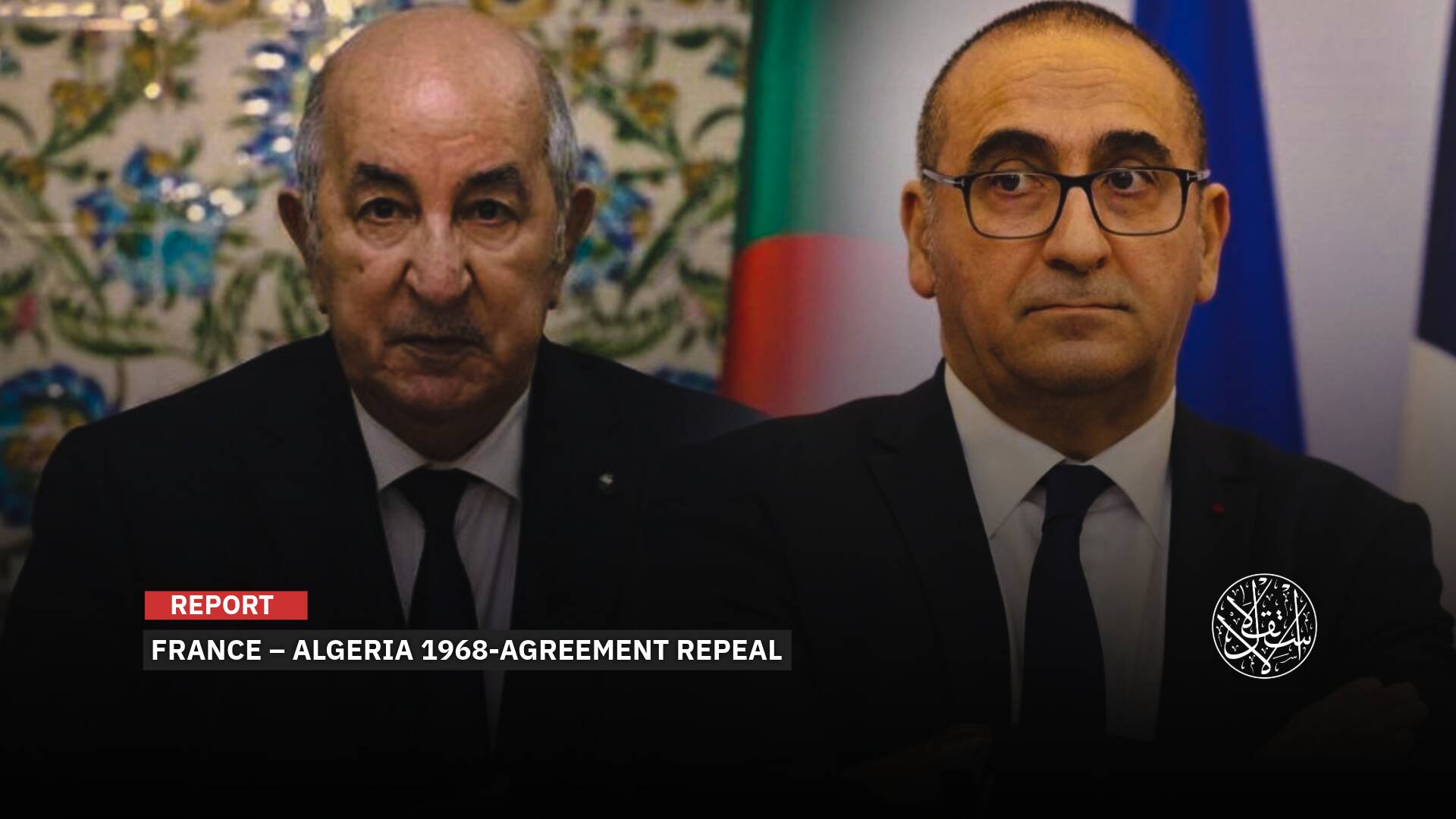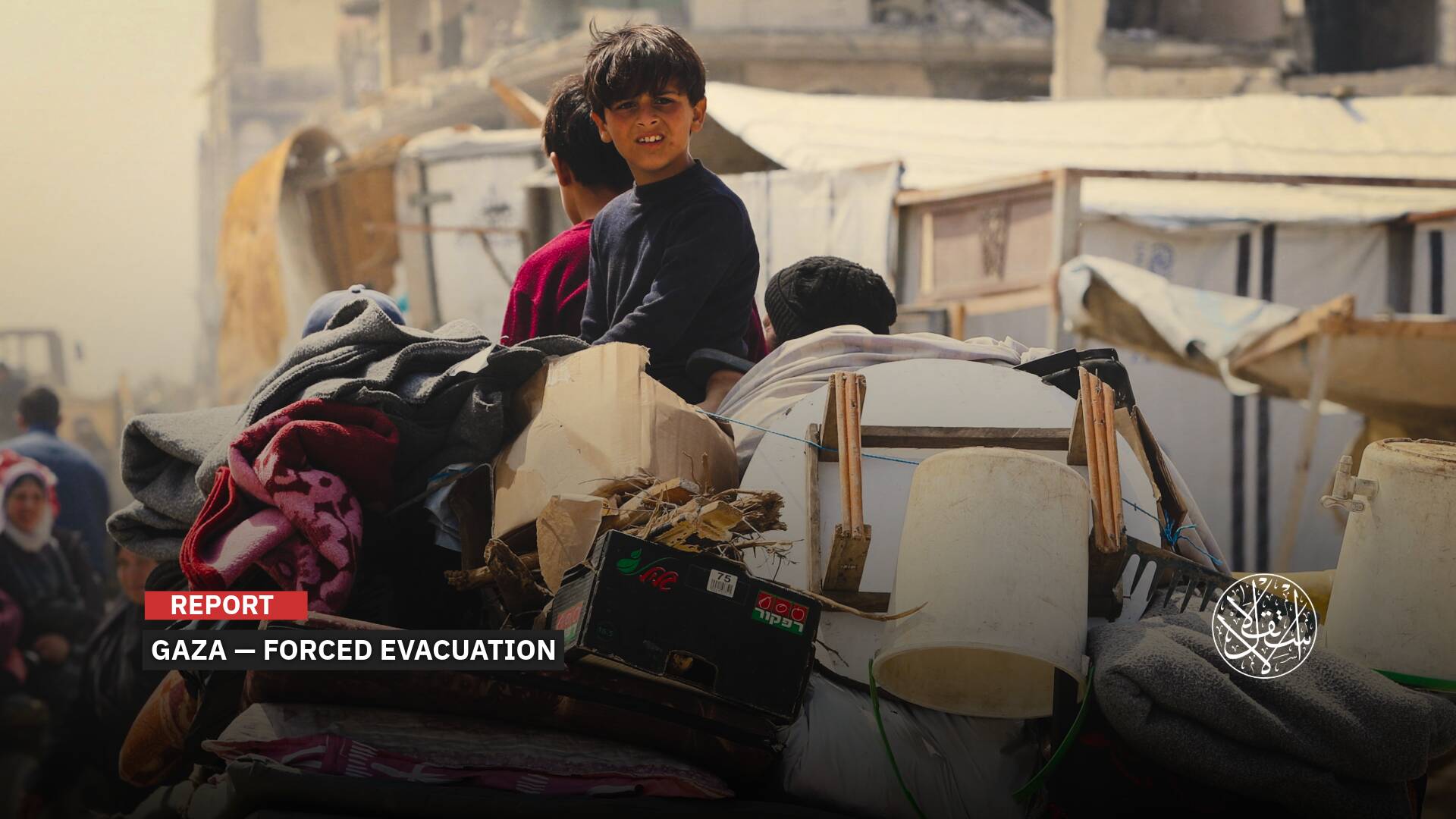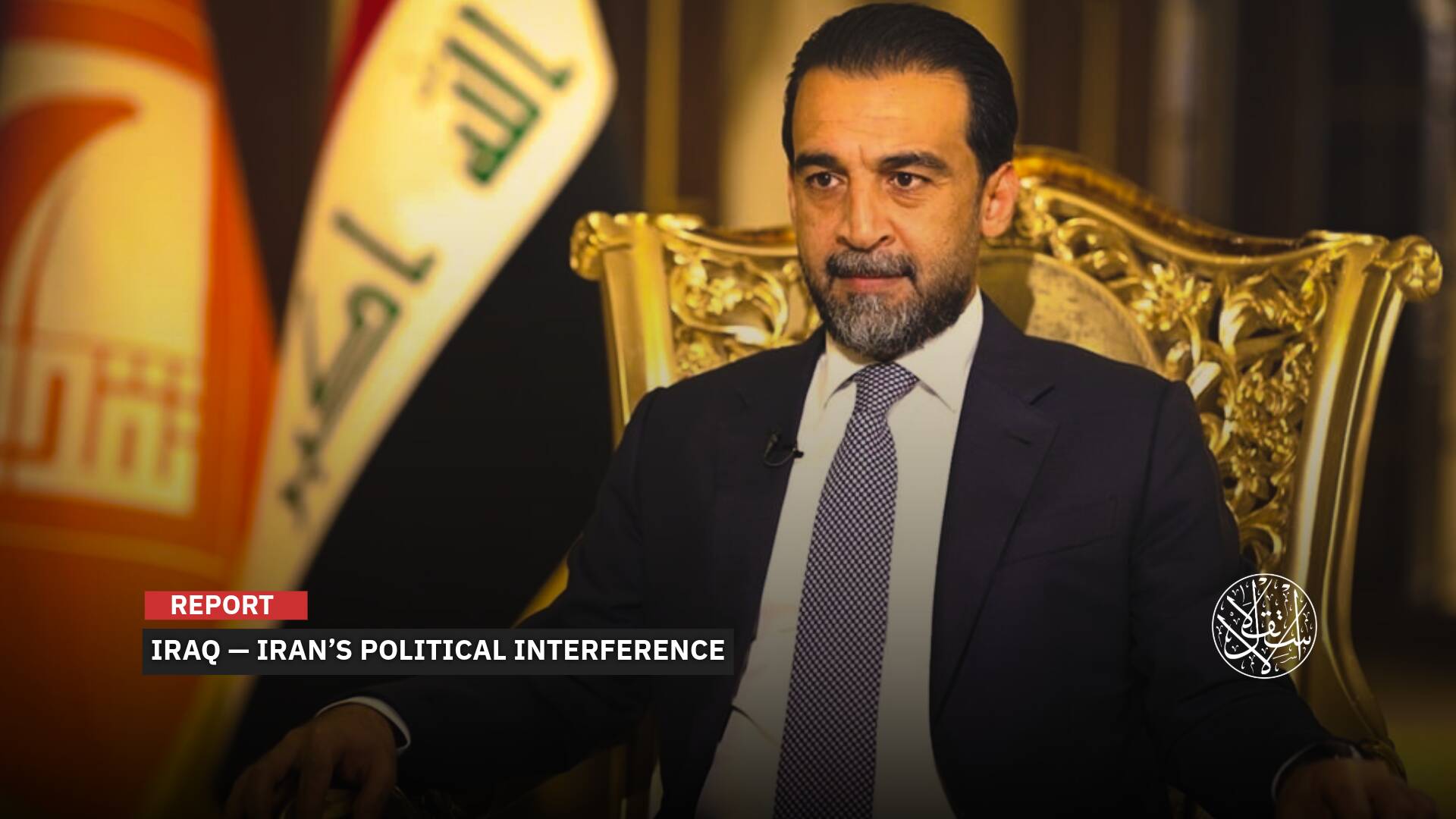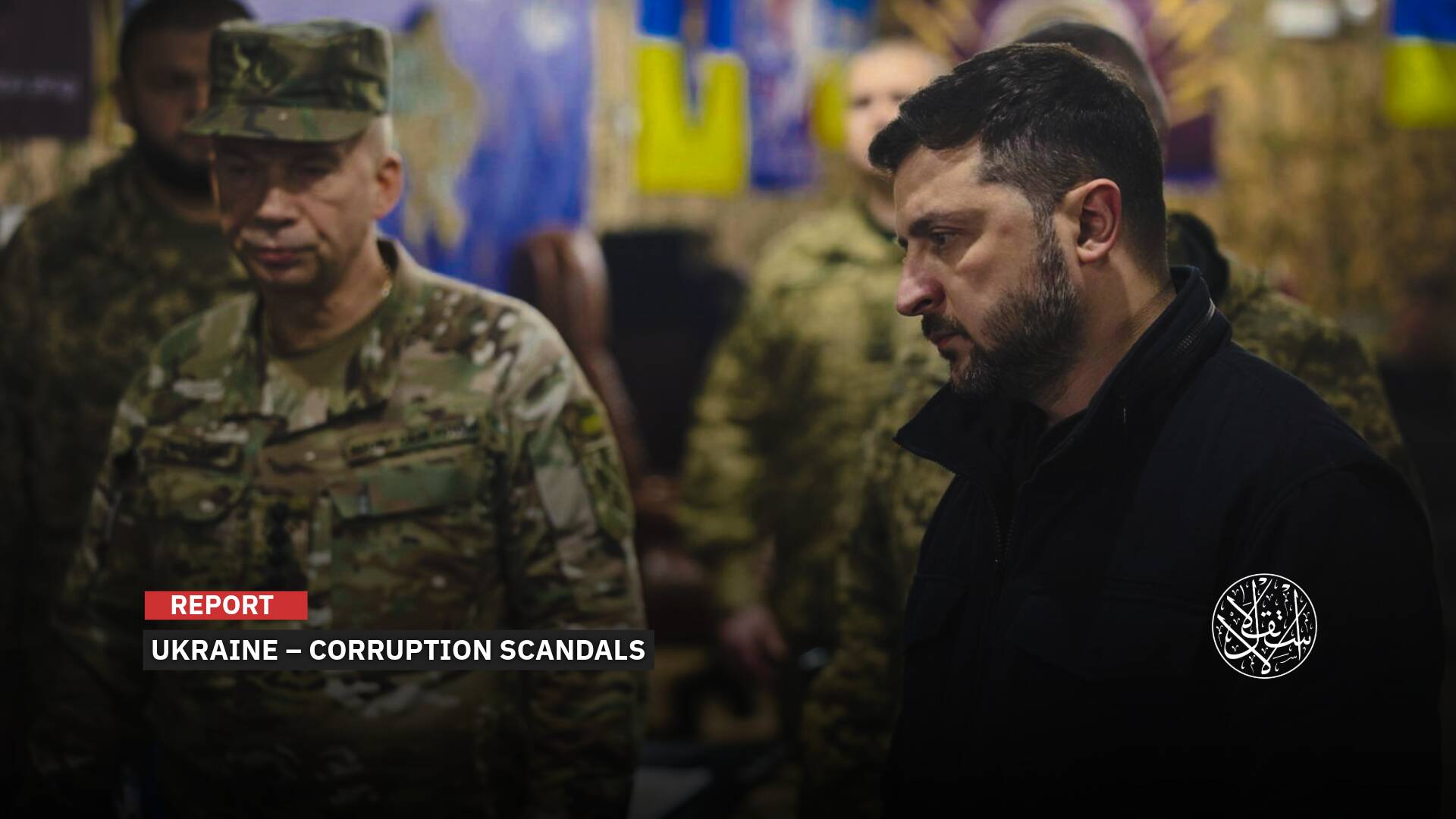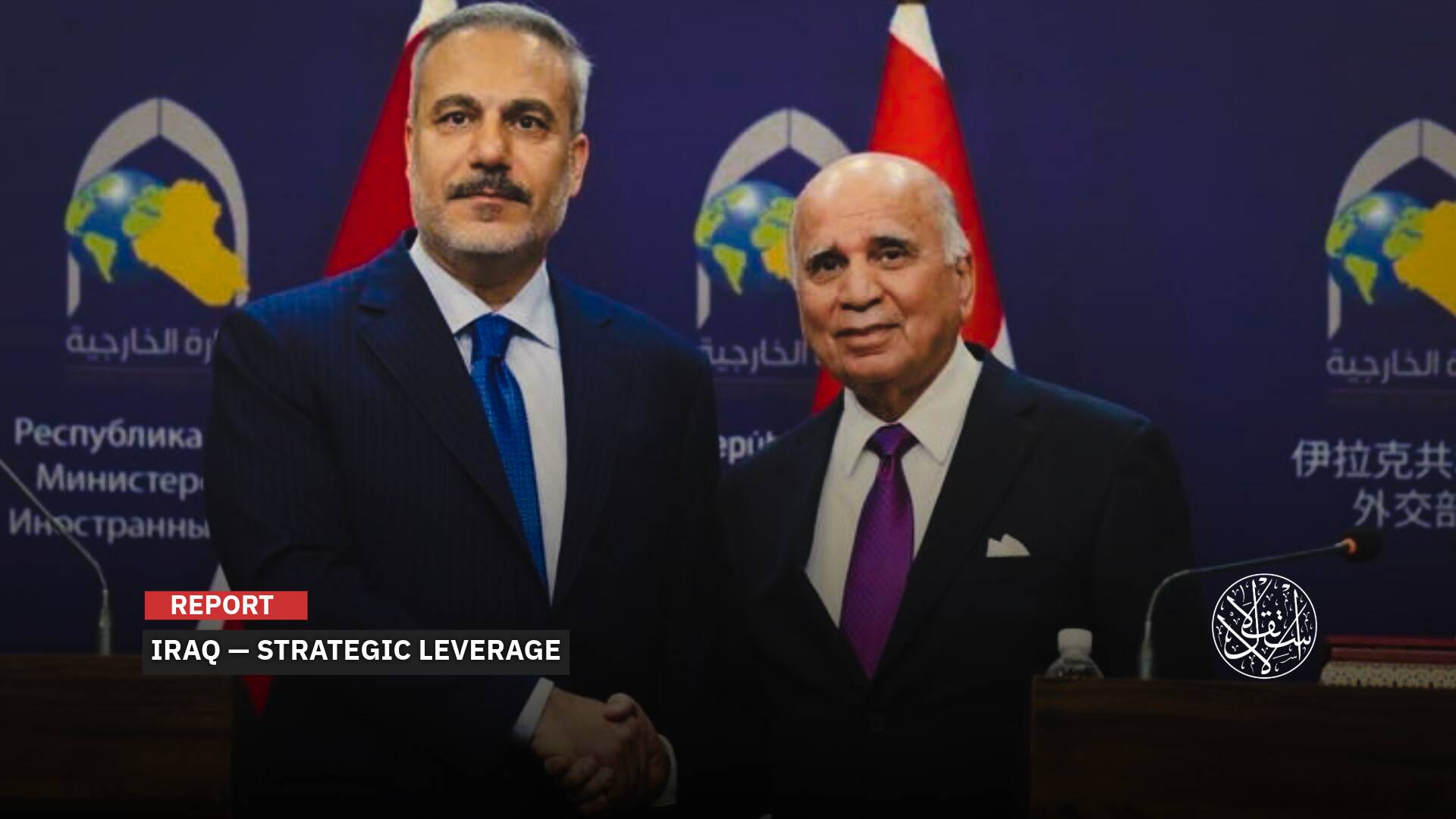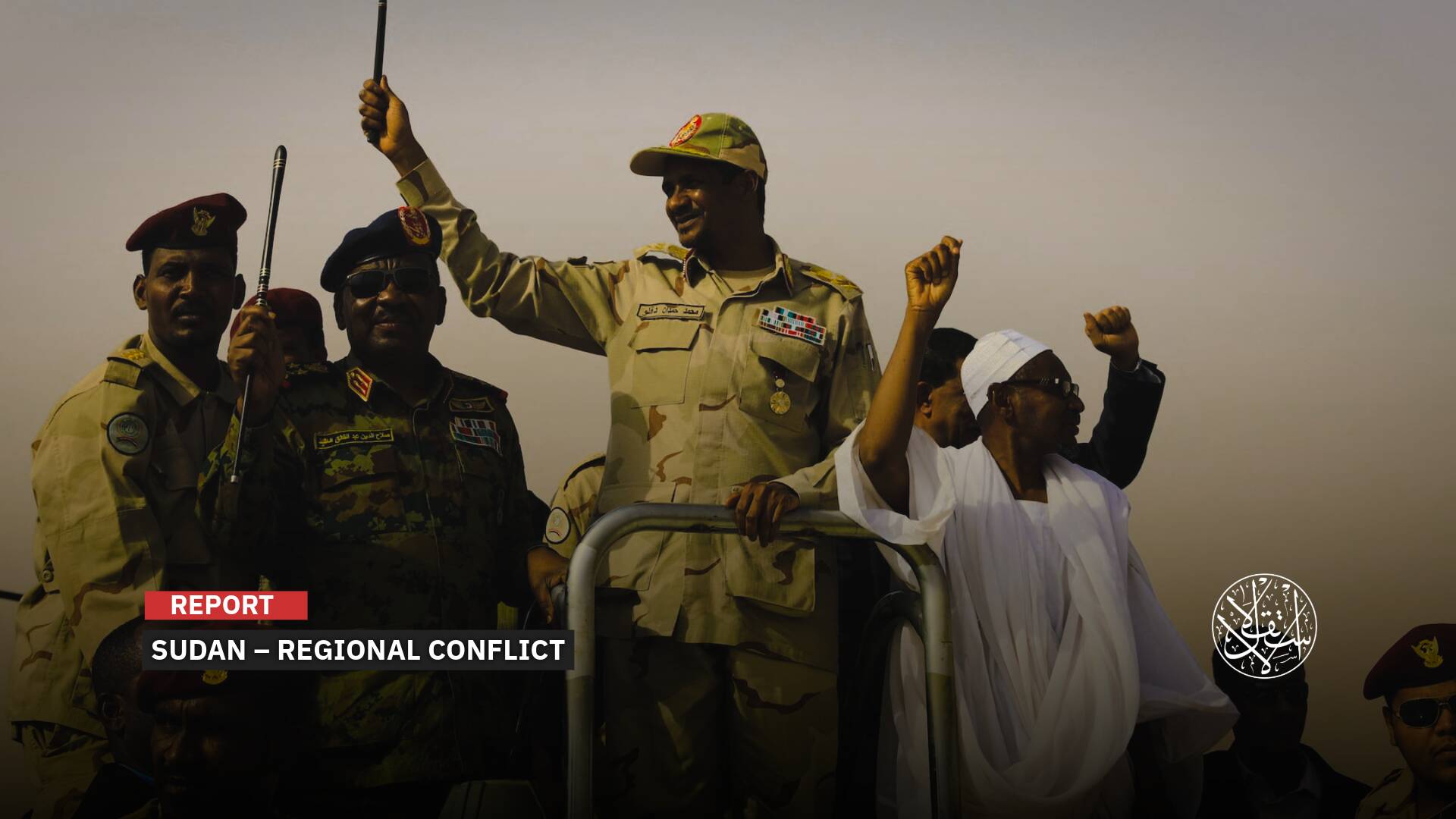Why Did ‘Israel’ Launch a Major Strike on Iran-Backed Factions in Central Syria?

“The Israeli message is clear: no more smuggling of weapons from Syria to Lebanon.”
Since launching its offensive on Lebanon in September 2024, “Israel” has ramped up precise strikes in Syria, targeting Iranian groups' command centers.
The airstrikes are designed to cut off or disrupt the supply routes funneling arms from Iran to Hezbollah in Lebanon.
New Target
In the latest attack, “Israel” launched simultaneous airstrikes on several sites and residential apartments in Palmyra, located in the Homs countryside of central Syria, on November 20, 2024. The strikes resulted in the deaths of 71 members of the Syrian regime forces, as well as non-Syrian fighters and commanders affiliated with Iran.
Syrian local networks reported that the airstrikes on Palmyra killed 45 Syrian Army personnel, including Brigadier General Abdullah al-Zayr, and 22 non-Syrian fighters, most of whom were from Iraq’s ‘Harakat Hezbollah al-Nujaba’ along with four members of Hezbollah.
Israeli warplanes fired a number of missiles from the airspace over the U.S. military base in al-Tanf area, on the Syrian-Iraqi-Jordanian border, in the southeastern Homs countryside, targeting the surroundings of Palmyra, said sources cited by Sputnik.
The Syrian regime, with strong support from Iranian factions, regained control of Palmyra in early March 2017, backed by intensive Russian air cover.
Since then, Iran has focused its efforts on the Syrian desert, using Palmyra’s strategically important location in central Syria. The city is 215 kilometers from Damascus and around 300 kilometers from the Iraqi border.
Palmyra is a key link to the town of al-Bukamal in Deir ez-Zor province, near the Iraq-Syria border.
Since late 2017, Iran has militarily focused on controlling the Syrian-Iraqi border at the al-Bukamal junction to secure the entry of its groups and weapons.
Since then, this route has served as a primary supply line from Iran, passing through Iraq and Syria, with al-Bukamal now a major military hub for Iranian-backed groups, extending to Hezbollah in Lebanon.
Since 2021, Iran has worked to settle the families of its Iraqi and Lebanese group members, as well as Revolutionary Guard and Quds Force families, in Palmyra.
The population of this city, which was once around 100,000, now stands at no more than 6,000 after the displacement of its residents due to the power struggles that ensued after the Syrian revolution in 2011. The city has become a second stronghold for non-Syrian Iranian group families.
Many analysts have linked this Israeli strike on Palmyra to the Iranian groups’ role in supporting Hezbollah militarily and logistically in the ongoing battle with “Israel.” The latter launched a ground invasion into southern Lebanon in early October 2024 with the goal of “eliminating Hezbollah's capabilities.”
Group fighters and their families are scattered across dozens of homes in the vital city of Palmyra, with an estimated population of about 10,000, out of the 100,000 members of Iranian factions—both local and foreign—recruited by Tehran in Syria since 2012.

Strategic Passage
In this context, Mohammad al-Ayed, director of the opposition Palmyra News Network confirmed that the residential apartments targeted by “Israel” in Palmyra are actually operation rooms managed by Iranian groups, especially the Islamic Resistance in Iraq.
“Palmyra hosts a military airport, which Iran uses for drone operations, in addition to receiving shipments of weapons from Iran via Iraq to distribute across Syria and to Hezbollah,”al-Ayed told Al-Estiklal.
“Palmyra functions as a strategic hub for Iran, extending its influence beyond Syria. Original residents are barred from returning, even though the fighting has ceased, to prevent them from witnessing the activities of Iranian militias in the area.”
“Palmyra is a storage center for Iranian weapons and spare parts, particularly missiles and drones, which could strategically affect Israel,” he added.
“Iran is now concerned about the possible collapse of the so-called Fajr-3 project [a land corridor connecting Iran to Lebanon via Syria] initiated in 2017 after Syrian regime forces and Iranian groups recaptured Palmyra from ISIS in March of that year,” according to al-Ayed.
For over a decade, “Israel” has carried out airstrikes against Iranian-linked targets in Syria, but these attacks have escalated since the outbreak of the Gaza war in October 2023, intensifying further with the aggression on Lebanon that began on September 27, 2024.
Israeli strikes have targeted the capital Damascus, its countryside, and the Homs and Latakia regions.
More than 130 members of the Syrian regime forces and local groups loyal to Iran have been killed in Israeli strikes on Iran-linked positions in Syria since September 2024.
Recently, the Israeli army has repeated its airstrikes on Syria with the goal, as they say, of “reducing attempts to transfer weapons from Iran through Syria to Hezbollah in Lebanon,” accusing the Tehran-backed group of “creating a logistics infrastructure to transfer weapons from Syria to Lebanon” via border crossings, two of which were rendered inoperable due to Israeli strikes in October 2024.
It is notable that “Israel” has targeted Iran-backed factions in both Iraq and Syria, while continuing its offensive in Lebanon against Hezbollah.
Even Iraqi Foreign Minister Fuad Hussein voiced his concerns during a meeting in Paris on October 25, 2024, after attending an international conference in support of Lebanon. He warned about the potential expansion of the war between “Israel” and Hezbollah in Lebanon into Iraq, stating that “Iraqi territory could become part of this war.”
On November 18, 2024, “Israel” urged the UN Security Council to take immediate action against groups launching attacks from Iraq, asserting what it described as “the right to self-defense.”
As a result, on November 19, 2024, Iraqi Prime Minister Mohamed Shia’ al-Sudani warned of a “planned Israeli aggression” against Iraq, instructing the relevant authorities to be on high alert to confront this “threat” and pursue “any military activity outside the state's control.”
In light of these developments, some observers have suggested that the Israeli strike on Palmyra, which targeted Iraqi factions affiliated with Iran, might serve as a “subtle message to Baghdad.”
This is especially true as the Iran-aligned “Islamic Resistance in Iraq” recently claimed responsibility for attacking “vital targets” in the occupied Umm al-Rashrash area on the Gulf of Aqaba's northern coastline using drones, in retaliation for Israeli ongoing aggression against Gaza.

Message to Iraq
The Israeli attack came two days after a visit by Iranian Defense Minister Major General Aziz Nasirzadeh to Damascus, where he met with Syrian President Bashar al-Assad.
Nasirzadeh emphasized Syria's highly strategic and pivotal role in Iran's foreign policy during his statement upon arrival in Damascus, as per IRNA.
He mentioned that he would discuss various aspects with Syrian political and military officials, particularly in the fields of defense and security, to strengthen and solidify their cooperation.
Prior to this, Ali Larijani, an advisor to Iranian Supreme Leader Ali Khamenei, visited Damascus and met with Assad before heading to Beirut on November 15, 2024.
In this context, Syrian opposition figure Major General Asaad al-Zubi said, “Netanyahu made the decision to cut off the oxygen supply to Hezbollah coming from Syria, either via al-Bukamal or Palmyra, through a route called the Qassem Soleimani road.”
“This involves the transportation of missile systems via various transport mechanisms, with Palmyra being the hub for distributing shipments to southern Damascus and then to Lebanon,” he added in a television interview.
“Iran had planned to send new missiles to Hezbollah, which is why this Israeli strike took place.”
Al-Zubi further pointed out that “Israel targeted Palmyra because it serves as a resting area for Iranian weapons. It has effectively become an Iraqi or Iranian-controlled zone with storage facilities designed to store long-range missiles, which is why some of the casualties were individuals overseeing those missiles.”
For his part, Syrian military expert Major General Ahmed Rahal argued that “the Palmyra strike served as a warning to Damascus, Baghdad, and Tehran. The Israeli message is clear: no more smuggling of weapons from Syria to Lebanon.”
“The message is also directed at the Iraqi government, and this could be followed by an Israeli strike within Iraq targeting Iran-aligned factions.”


